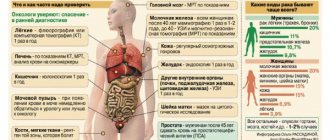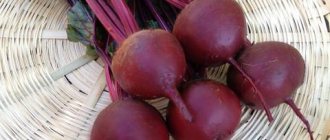Natural probiotics in food are the main source of beneficial microflora for humans throughout life. It is no secret that balanced microflora plays an important role in maintaining many metabolic functions, strengthening the immune system, digesting food substrates and other processes. To avoid serious dysbiotic disorders in the body, it is important to regularly replenish the supply of beneficial bacteria with food, and, if necessary, use specialized preparations - multiprobiotics. In this article you will learn:
- How important is it to follow a diet during probiotic therapy;
- What function do different strains of beneficial bacteria perform?
- What foods contain probiotics?
- What are prebiotics and what are they for?
- Is it possible to restore microflora only with diet?
Lactobacilli
The intestinal mucosa of any person is a habitat for a huge number of different types of bacteria that can harm the body or, on the contrary, be beneficial. Bacteria that are beneficial include lactobacilli (or lactobacilli), which enter the body mainly from fermented milk products.
By the way, lactobacilli are the first microorganisms that a newborn encounters in his life: passing through the birth canal, the baby receives these beneficial microbes from the mother.
Benefits of lactobacilli
- Transformation of lactose, which is contained in the whole product, directly into lactic acid, which provides favorable conditions for the complete digestion of food.
- Prevention of the development of intestinal diseases. The fact is that lactobacilli produce substances that have pronounced antibiotic properties that suppress the growth of putrefactive bacteria.
- Reducing the risk of developing cancer. Thus, lactobacilli suppress the functions of enzymes that affect the formation and reproduction of cancer cells.
- Strengthening the immune system through the synthesis of vitamin K, thiamine, riboflavin, iron, calcium, selenium and iodine.
- Improving metabolism and metabolic processes.
BUT!
One should not attribute miraculous properties to lactobacilli, remembering that products containing these bacteria are only an auxiliary measure in the treatment of diseases of the digestive system and dysbiosis.
What foods contain lactobacilli?
Lactobacilli provoke lactic acid fermentation, which is why they are widely used in the production of fermented milk products.
The maximum amount of lactobacilli is contained in the following fermented milk products:
- yoghurts;
- kefir;
- fermented baked milk;
- soft cheeses;
- curdled milk;
- cottage cheese;
- sour cream.
Intestinal problems
The problem of microecology of the human intestine is becoming increasingly relevant in our time.
Diseases caused by a loss of balance between a person (carrier) and microorganisms have become increasingly common. They can be short-term, I call them dysbacterial reactions, or long-term (dysbacteriosis).
To avoid problems with the digestive system, you should pay attention to such beneficial substances as prebiotics and probiotics (together they represent a group of symbiotics), which bring significant benefits to human health by ensuring better survival and survival of beneficial bacteria in the human intestine. They are found in foods, medicines and dietary supplements
The beneficial bacteria they contain can die when they enter the stomach and never reach the desired target (intestines), which is why the drugs enclose them in a special shell or capsule to save the beneficial biomass.
Probiotics
Probiotics are microorganisms beneficial to human health. Probiotics include living microorganisms (namely lactic acid bacteria, bifidobacteria and yeast) present in the intestines of a healthy person.
Normally, the human body should contain about 1 – 1.5 kg of probiotics (this is the amount that ensures the full functioning of not only systems and organs, but also the immune system). But the realities are far from the norm: for example, in fact, the human body contains about one tenth of the established norm of probiotics, while in many people almost all healthy microflora is completely replaced by pathogenic ones.
Benefits of probiotics
- Strengthening the immune system.
- Synthesis of vitamins K and B.
- Improved digestion.
- Neutralization of toxins and pathogenic bacteria.
- Neutralization of the harmful effects of antibiotics on the body.
- Elimination and treatment of diarrhea.
- Reducing the manifestations of allergies.
- Elimination of inflammation.
- Maintaining normal metabolism.
- Fighting infections.
- Improving the condition of the skin.
What foods contain probiotics?
One of the main sources of probiotics is yogurt, which will help cope with diarrhea, flatulence, and other digestive disorders.
In addition to yogurt, probiotics are present in the following foods:
- soft cheeses;
- kefir;
- curdled milk;
- fermented baked milk;
- cottage cheese;
- miso soup (miso is a fermented soybean product);
- tofu (or soy cheese);
- sauerkraut;
- pickled cucumbers and tomatoes;
- sourdough bread;
- artichokes;
- onion;
- soaked apples;
- leek;
- banana.
Important!
The effectiveness of probiotics increases significantly when they are consumed simultaneously with prebiotics, which are not digested in the intestines, but create a favorable environment for both the growth and functioning of healthy intestinal microflora.
Who should not consume foods and supplements containing bifidobacteria and lactobacilli?
Alena Stepanova: For most of us, probiotics do not pose a danger. They can cause harm in severe diseases, such as acute pancreatitis, oncology, and ulcers. They are also contraindicated for those who suffer from irritable bowel syndrome, bacterial overgrowth syndrome and fungal overgrowth syndrome. They can also provoke the development of infections in those who take drugs that specifically reduce immunity.
Sauerkraut, recipe see here
Prebiotics
Prebiotics are the remains of food substances that are not digested by gastric enzymes, as a result of which they are not absorbed in the upper parts of the gastrointestinal tract, but end up in the lower parts, where probiotics “feed” on them, which has a beneficial effect on the functioning of not only the intestines, but the whole body.
Benefits of prebiotics
- Restoration of intestinal microflora.
- Strengthening the immune system.
- Strengthening intestinal motility.
- Eliminate constipation.
- Increasing the effectiveness of probiotics.
What foods contain prebiotics?
Food sources of prebiotics:
- chicory root;
- raw Jerusalem artichoke;
- dandelion greens;
- garlic;
- bulb onions;
- leek;
- raw asparagus;
- raw wheat bran;
- bananas;
- wheat flour;
- cornflakes;
- oat groats;
- beer;
- strawberry.
Bifidobacteria
Bifidobacteria are found in the body in large quantities (for example, during breastfeeding, bifidobacteria make up about 80–90 percent of the normal intestinal flora of children). Moreover, most of them are concentrated in the large intestine, representing the basis of its parietal and cavity microflora. With the help of bifidobacteria, the reproduction and spread of both putrefactive and pathogenic microbes in the body is suppressed.
The benefits of bifidobacteria
- Reducing the risk of developing various allergic reactions.
- Restoration of intestinal microflora.
- Prevention of the development of dysbacteriosis.
- Reducing cholesterol levels.
- Promoting weight loss.
- Restoration of liver and kidney function.
- Reducing the risk of developing cancer.
- Normalization of digestion.
- Stimulating intestinal motility.
- Promoting the synthesis and absorption of vitamins and amino acids.
- Strengthening the immune system.
- Preventing the development of constipation and flatulence.
- Inhibition of the action of carcinogens.
What foods contain bifidobacteria?
Important!
Products containing bifidobacteria are characterized by fairly high dietary properties, since they contain a number of biologically active compounds, including amino acids, fatty acids, vital enzymes, and antibiotic substances, not to mention micro- and macroelements.
All fermented milk products (especially kefir) are bifid-containing products. It is kefir that is recommended to drink for diseases such as dysbiosis, rickets, anemia, pneumonia, and food allergies.
But it is important to use this truly healing product correctly.
Firstly, kefir should not be drunk cold or warm (this drink should be at room temperature).
Secondly, kefir is consumed in small sips.
Dysbacteriosis
Under the influence of a number of external factors, for example, with long-term use of antibiotics or surgery, the amount of probiotics can greatly decrease and dysbiosis will begin to develop. Among its key symptoms:
- Flatulence - increased gas production.
- Abnormal stool – diarrhea interspersed with constipation.
- Pain in the abdominal area can be of various types.
- Mental disorders - irritability, sleep problems, apathy.
- Vitamin deficiency, clearly visible by the general deterioration of the condition of hair and skin.
Alkaloids
Alkaloids are organic substances that contain nitrogen.
There are a huge number of such substances in nature, they have different chemical formulas and have different effects on the human body. Most alkaloids have a bitter taste. Alkaloids are produced by the breakdown of amino acids.
Benefits of alkaloids
- Elimination of pain syndrome.
- Relieving spasms.
- Helping to quickly stop bleeding.
- Decreased blood pressure.
- Calming the nervous system.
- Protecting the body from the action of pathogens.
- Inhibition of the development of tumors in the body.
- Elimination of symptoms of intoxication.
Important!
There are alkaloids that are dispensed only as prescribed by a doctor because they are drugs or dangerous poisons (such alkaloids include, for example, morphine and cocaine).
What foods contain alkaloids?
Alkaloids are found primarily in plants, and different parts of them may contain different amounts. Moreover, one alkaloid may be present in the fruits of a plant, while another is present in the roots, and a third is present in the leaves.
The alkaloid content in plants often does not exceed 1–3 percent. Particularly rich in these substances are plants from the families Poppy, Solanaceae, Legumeaceae, as well as Cutraaceae, Madderaceae, Ranunculaceae and Loganiaceae.
In addition to plants, alkaloids are present in some types of mushrooms and marine organisms.
Interesting fact!
A unique alkaloid is produced by tropical frogs. And the human body also produces substances similar in their chemical properties to alkaloids (we are talking about serotonin and adrenaline, which in some sources are called alkaloids, which is not a mistake).
Next, we will take a closer look at such alkaloids as caffeine and nicotine.
Where do bifidobacteria and lactobacilli live?
Igor Vainshtok: Bifidobacteria and lactobacilli are part of the microbiota (also known as “microflora” and “microbiome”) .
This collection of microorganisms can be called another organ of the human body. It covers a continuous layer of human skin, intestines and other mucous membranes. Microbiota is a wonderful example of the mutually beneficial interaction between humans and bacteria. The microorganisms included in it play a vital role in almost all vital processes of the body: in digestion, immunity, even in the functioning of the circulatory system and nervous system. Research results show that more than 90% of microorganisms in nature are organized into so-called “biofilms”, balanced in species composition and functional distribution. Biofilm is a complex formation in which individual microorganisms act in concert, “socially,” ensuring the highest survival of the community. The components of the human microbiota are no exception; the bulk of them are also combined into biofilms. They line the mucous membranes, fill the gastrointestinal and urogenital tracts, and the respiratory tract, ensuring their normal functioning.
Caffeine
The alkaloid caffeine belongs to the class of mild and non-aggressive stimulants that increase brain activity.
Benefits of caffeine
- Stimulating the heart.
- Increased physical and mental activity.
- Stimulating the nervous system.
- Promotes the production of stomach acid, which significantly improves the digestion process.
- Constriction of blood vessels.
- Increased urination.
- Relief of headaches, which is used in the treatment of migraines.
- Stimulating breathing.
- Eliminate drowsiness.
- Increased blood pressure.
Important!
With prolonged and regular use of caffeine, it is possible to develop a disease called “theism” (or “caffeineism”). This disease is a mental dependence on caffeine and is manifested by the following symptoms:
- nervousness;
- irritability;
- unreasonable anxiety;
- trembling in the body;
- muscle twitching;
- insomnia;
- headaches;
- rapid heartbeat.
To avoid such manifestations, it is recommended to consume caffeine-containing products (especially coffee) in moderation. In addition, if you decide to stop drinking coffee altogether, it is recommended to do so gradually.
Important!
Caffeine and other central nervous system stimulants should not be taken in the following conditions:
- excessive excitability;
- insomnia;
- diseases of the cardiovascular system;
- severe hypertension;
- atherosclerosis;
- polycystic disease.
Important!
Caffeine consumption leads to increased loss of minerals from bone tissue.
What foods contain caffeine?
Caffeine is found in more than 60 types of plants and products used as dietary supplements and components for various medications.
But the most common of them are the following:
- tea;
- a coffee tree;
- guarana;
- mate;
- cocoa;
- kola nuts.
Interesting fact!
White chocolate does not contain caffeine.
Restoration of intestinal microflora
Probiotics are among the beneficial bacteria. It has been proven that they are able to restore the ratio between pathogenic, opportunistic and favorable flora in favor of the latter.
The development of an imbalance between various microorganisms is fraught with the appearance of a wide range of pathologies: dyspeptic disorders, decreased resistance to intestinal infections, allergies, as well as diseases of the nervous, endocrine and cardiovascular systems.
According to American scientists, an adequate amount of “harmful” and “good” bacteria in the intestines improves the digestion and absorption of proteins and carbohydrates due to the activation of enzymes in the lumen of the digestive tube, and also increases the rate of maturation of cells of the immune system, which has a positive effect on the body’s resistance as a whole .
Let us remind you that we reviewed 8 specific foods that are beneficial for the intestines in a separate article.
Probiotics are extremely valuable cultures of microorganisms that help restore the balance of bacteria in the intestines, improve digestion and prevent many diseases.
Nicotine
The alkaloid nicotine is found in plants from the Solanaceae family (mainly tobacco and shag), and the biosynthesis of this substance occurs in the roots, while it accumulates in the leaves.
The history of the spread of nicotine is interesting. Thus, the French ambassador Jean Nicot, who served at the royal court of Portugal, sent dried leaves, as well as tobacco seeds, to the French queen Catherine de Medici, who suffered from migraines. To get rid of migraines, Jean Nico recommended putting dry tobacco leaves crushed into powder into the nose. Subsequently, tobacco was grown in gardens by order of Catherine de Medici.
The use of nicotine increases the concentration of adrenaline in the blood, which leads to increased blood pressure, increased heart rate, significantly increased respiration and increased blood glucose levels.
Nicotine also increases the level of dopamine, which excites the pleasure centers of the brain. In turn, such pleasure centers are responsible for the pain threshold.
Nicotine is a toxic substance, but when consumed in small doses (for example, through smoking), this alkaloid acts as a psychostimulant.
However, nicotine does more harm to the body than good: for example, nicotine suppresses appetite, which leads to weight loss.
Important!
Long-term and repeated consumption of nicotine leads to the development of physical and mental addictions, which are quite difficult to get rid of.
In addition, constant use of nicotine can provoke the following diseases and dysfunctions:
- hyperglycemia;
- arterial hypertension;
- atherosclerosis;
- tachycardia;
- arrhythmia;
- angina pectoris;
- ischemia;
- heart failure;
- heart attack;
- cancer of the lungs, tongue and larynx;
- gingivitis;
- stomatitis.
What products contain nicotine?
As mentioned above, the highest nicotine content is found in plants from the Solanaceae family.
But this alkaloid is also present in eggplants, cauliflower, potatoes, and tomatoes (tomato juice is especially rich in nicotine).
This begs a completely reasonable question: how many vegetables do you need to consume to replace one cigarette?
One cigarette contains 10 mg of nicotine, and most of this alkaloid is destroyed during the smoldering of a lit cigarette (thus, when smoking a cigarette, a person receives about 0.5 - 3 mg of nicotine). To replenish this amount of nicotine, you will have to eat 5 kg of eggplants, at least 12 kg of new potatoes and drink about 10 liters of tomato juice.
Conclusion:
It is simply impossible to completely switch to vegetable sources of nicotine, although they can still provide some help in getting rid of such a bad habit as smoking.
Alcohol
Speaking about substances that slowly but surely destroy our body, we cannot fail to mention alcoholic beverages.
I would like to immediately note that alcohol in small quantities is not only not harmful to health, but is also beneficial, since it helps lower cholesterol, prevents the formation of blood clots, dilates blood vessels, and also increases blood circulation. As a result, the risk of developing cardiovascular diseases is reduced. In this case, it is advisable to give preference to red wine, the daily norm of which is no more than two glasses.
But excessive consumption of alcohol (including beer, liqueurs and vermouth) leads to disruption of the body as a whole, because alcohol does not act selectively, it damages the body almost instantly, and in all directions at once.
While the liver is trying to cope with ethanol, some of the already absorbed alcohol negatively affects the functions of the brain, as well as the cardiovascular system. But that’s not all: at the same time, the functioning of the stomach, pancreas, and intestines is disrupted. Often the complex of damaging factors is so extensive that it can provoke severe alcohol intoxication, which leads to death or severe disability.
I wanted to debunk several myths about alcohol.
Alcohol helps you stay warm
To warm up, just drink 50 g of vodka or cognac (as you know, alcohol dilates blood vessels and normalizes blood supply to internal organs). But subsequent doses will increase blood flow only in the skin, causing it to turn red and create a pleasant feeling of warmth. But this feeling will quickly disappear, since with subsequent doses of alcohol, heat transfer will also increase, that is, the body will cool down even faster.
Alcohol increases appetite
And this is true, and only 25 g of strong alcoholic drink is enough to whet your appetite. In this case, alcohol is drunk half an hour to an hour before meals.
Alcohol effectively fights stress
Alcohol helps you relax after a hard week of work, but for such relaxation, 50 ml of cognac or a glass of wine is enough. But after the first 50 ml the mood improves and I want to continue the “banquet”. As a result, it becomes even sadder, and the short-term feeling of celebration and euphoria is replaced by a feeling of hopelessness.
Alcohol helps lower blood pressure
A small dose of alcohol (for example, 100 ml of dry red wine) can indeed weaken the tone of the vascular wall, but alcohol also increases the heart rate. As a result: the more you drink, the higher your blood pressure.
High-quality alcohol is not harmful to health
Any alcoholic drink without exception poisons the body. The only question is that cheap alcohol does not undergo the proper degree of purification, and therefore contains so-called fusel oils, which greatly enhance the toxic effect of alcohol.
Beer is not alcohol
This statement has no right to exist, since beer (albeit in small quantities) contains alcohol.
Alcohol contains no calories
Contains, and a very large amount. And the stronger the drink, the more calories it contains.
Alcohol is not washed down, but eaten
Many are of the opinion that alcohol should be eaten as a snack, without even suspecting that snacks are different from snacks. Thus, cold snacks (like juices, fruit drinks and compotes) very poorly neutralize alcohol, which is quickly absorbed into the blood. But hot and fatty dishes, on the contrary, suppress the absorption of ethanol, thereby reducing the severity of intoxication. Therefore, it is better to have hot snacks.
What foods contain alcohol?
Interesting fact!
We associate the word “alcohol” with a liquid obtained through fermentation. But there are products in which alcohol is present in the form of fructose, which directly enters the fermentation process in the body, thereby forming alcohol in the blood.
Foods and drinks containing alcohol (alcohol):
- all alcoholic and low-alcohol drinks;
- kvass;
- kumiss (oriental drink);
- kefir;
- yogurt;
- curdled milk;
- fruit juices (the fact is that when making juices a special concentrate is often used, the basis of which is alcohol);
- chocolate;
- lollipops;
- cakes;
- bananas (especially overripe ones);
- sour cabbage;
- apples;
- grape;
- cheese;
- citrus;
- sour cream;
- black bread.
How can these bacteria be useful against the backdrop of a pandemic?
Igor Vainshtok: There is no data on the use of drugs in the treatment of new coronavirus infection (COVID-19), but the theory indicates the possible benefit of their use in this case. There will definitely be no harm from this.
Alena Stepanova: More depends on the balance of bifidobacteria and lactobacilli in the body than we think. Dysbacteriosis means not only problems with the digestive system, but also a decrease in immune function, a constant feeling of weakness and fatigue. Against the background of constant stress, all this makes our body less resistant to infections and delays the recovery of those who do become infected.
Fermented milk products (if you do not have lactose intolerance) and supplements with bifidobacteria and lactobacilli are the most affordable way to prevent dysbiosis. So now is the time to lean on them and remember that it is important to protect yourself not only from the outside by wearing masks and gloves, but also from the inside.
BONUS: Video recipe for homemade matsoni
Yeast
If we’re already talking about fermentation products, then we can’t help but pay attention to yeast, the benefits and harms of which we’ll talk about below.
Yeast is a protein product that contains live cultures, microorganisms, and bacteria. The proteins that they contain are perfectly absorbed by the body, not inferior in quality to proteins that enter the body with meat, milk or fish.
Yeast is rightfully considered the richest source of mineral elements, as well as amino acids and vitamins (potassium and phosphorus, magnesium and calcium, iron and folic acid, B vitamins, methionine and lecithin).
Benefits of yeast
- Maintaining optimal balance of intestinal microflora.
- Accelerates the healing of wounds and burns (due to this property, yeast is used for skin diseases).
- Improving the secretion of gastric glands.
- Improving the absorption capacity of the intestine, which is used in the treatment of ulcers, gastritis, colitis and enterocolitis.
- Strengthening the immune system.
- Reducing cholesterol levels.
- Relief of pain due to neuritis.
- Increased physical activity and performance.
- Improving overall tone and well-being.
- Increased appetite.
- Activation of the pancreas.
- Improving food absorption.
- Normalization of metabolic processes.
- Promoting the elimination of toxins.
- Strengthening nails and hair.
But!
Not all yeast is equally beneficial. The fact is that baker's yeast enters gluten capsules during the baking process. Already in the intestines, yeast is released from such capsules, beginning to harm the body, damaging the mucous membrane and disrupting the intestinal microflora. Moreover, when entering the blood plasma, such yeast absorbs vitamins, microelements and proteins that are vital for the normal functioning of the human body. At the same time, the yeast begins to release its metabolic products, which are toxins.
Such large-scale “activity” of yeast leads to intoxication and weakened immunity, and this is fraught with chronic diseases and the development of tumor processes.
Conclusion!
Live baker's yeast should be avoided!
Important!
Yeast products are not recommended for use in case of individual intolerance, kidney disease or gout.
What foods contain yeast?
Yeast is found in bread, kvass, beer and wine. Homemade yeast is prepared from hops, rye bread crusts, as well as malt, raisins, and potatoes.
What is the difference?
Bifidobacteria and lactobacilli are part of the microbiota of the human body, living with it in complete symbiosis. The former live in the intestines and “feed” on nutrients from food, in return producing some of the necessary amino acids, proteins and even B vitamins. They also help proteins and fats to be absorbed into the walls and accelerate the absorption of some vitamins and minerals, and also form a strong barrier, preventing allowing harmful microorganisms to leave the intestines.
The second ones are distributed throughout the gastrointestinal tract, starting from the oral cavity. Their main task is the production of lactase, a special enzyme with which our body digests lactose. The second function of lactobacilli is protective. They synthesize lysozyme, another enzyme responsible for the destruction of pathogenic bacteria. Despite the fact that the scope of activity of lactobacilli is much wider, there are significantly fewer of them in the microbiota - only 5%, while bifidobacteria - 95%.
Soybeans
Soybean is an annual herbaceous plant from the Legume family.
Soy is famous for its high content of complete protein, B vitamins, as well as iron, calcium and essential fatty acids. This cholesterol-free product has taste properties that make it possible to make a wide range of different meat and dairy products from soy.
Today there is a lot of controversy regarding the benefits and harms of soy. I would like to immediately note that only natural soy is useful, which in terms of the amount of protein it contains is superior to such products as fish, eggs, meat (and soy proteins are absorbed by 90 percent, which cannot be said about animal proteins).
Benefits of soy
- Preserving the beauty of skin and hair.
- Protecting the body from the negative effects of the environment.
- Regulation of cholesterol levels.
- Reducing the risk of developing heart and vascular diseases.
- Improving kidney function in diabetes.
- Normalization of fat metabolism.
- Promoting weight loss.
- Strengthening the immune system.
- Normalization of metabolism.
- Improving the functioning of brain cells.
- Strengthening the nervous system.
- Binding and removal from the body of radionuclides, as well as heavy metal ions.
Harm of soy
- Hormonal imbalance.
- Suppression of the functions of the endocrine system (especially for children).
- Increased risk of miscarriage.
- Cerebrovascular accident.
- Increased risk of developing Alzheimer's disease.
But such harm to the body is caused by the consumption of genetically modified soybeans, which today are present in a large number of products that we consume daily.
What foods contain soy?
Food sources of soy:
- miso (thick soybean seed paste);
- natto (boiled soybean seeds);
- soy flour;
- soybean oil;
- soy milk;
- soy meat (prepared on the basis of low-fat soy flour);
- soy sauce;
- pace;
- tofu;
- Yuba (dried foam skimmed from the surface of soy milk).
If we talk about genetically modified soybeans, it is present in sausages, semi-finished meat products (dumplings, ravioli, pancakes with meat), dairy drinks, mayonnaise, margarine, pasta, chocolate, candies and even in baby food products. The presence of soy in the product is indicated by markings on the label E479 and E322.
What foods contain probiotics and prebiotics?
Useful components include not only dietary supplements. Both prebiotics and probiotics are used in the food industry. This is due to their beneficial effects
List of foods with probiotics
Gut probiotics are found in the following foods:
- Natural yogurt. Live bacteria are included in the composition in the absence of pasteurization or heat treatment. Experts note that this type of fermented milk product is an optimal source of probiotics: bifidobacteria and lactobacilli. Scientific studies have proven the benefits of yoghurt for strengthening bone tissue and normalizing blood pressure. To lose weight, you need to choose a product labeled “Greek”.
- Kefir. The beneficial effects of a natural probiotic source are beyond doubt. Its use is recommended for pathologies of the digestive system of an infectious nature, for example, traveler's diarrhea. Kefir has antibacterial activity, which is more pronounced against pyogenic streptococcus. The natural probiotic in the fermented milk product is useful for chronic gastritis and stomach ulcers by inhibiting the growth of Helicobacter pylori. Kefir increases bone mineral density, accelerates wound healing, and reduces the risk of cancer pathologies.
- Cheeses. Probiotics are found in the following types of products: cheddar, gouda, mozzarella. Cheese also provides the body with phosphorus, B vitamins, calcium and protein. The product helps reduce blood pressure and the risk of heart attack and stroke.
- Sauerkraut. During the cooking process, vegetables are exposed to beneficial bacteria. Sauerkraut is a source of vitamins K, B, C, and some macroelements (selenium, sodium, manganese, iron). Its use has a beneficial effect on the organs of vision due to the content of zaxanthine and lutein. Experts note anti-cancer and antioxidant properties.
- Pickles. Products with probiotics to stimulate the intestines - pickles, as well as other vegetables. They are low in calories and contain lactobacilli. It has been proven that pickles normalize the lipid profile. However, the benefits of consumption should be expected only in the absence of vinegar in the composition.
- Kombucha (kombucha). The cool, sweet drink is popular not only for its taste and the presence of probiotics. It reduces the negative effects of toxic substances, glucose levels, and stabilizes the functioning of the pancreas.
List of foods with prebiotics
Dietary fiber is needed for the reproduction of beneficial microflora. Eating food containing prebiotics improves the functioning of organs and systems of the body:
- Chicory root. The product contains 47% fiber. The prebiotic represented by inulin has beneficial properties. The extract prevents the development of diabetes mellitus (type 2), improves the absorption of fats, and slows down aging. Using chicory instead of coffee helps prevent atherosclerosis. Experts note antioxidant and anticancer effects.
- Jerusalem artichoke. The product contains 76% dietary fiber in the form of inulin. Eating vegetables improves immunity, improves metabolic processes, and reduces the likelihood of type 2 diabetes and fatty liver disease. The thiamine and potassium contained have a positive effect on skeletal muscles and nerve impulses.
- Cocoa. The drink includes flavonoids, which stimulate the growth of beneficial intestinal microflora. Eating chocolate with a significant cocoa content inhibits the activity of fungi. The component has a cardioprotective effect.
- Flax seeds. Fiber is a plant fiber (based on mucilage gum - 30%, cellulose and lignite - 70%). Flaxseed and oil improve gastrointestinal motility. Nutritionists prescribe the product to reduce the absorption of fat particles. Its use is considered to prevent pathologies of the heart and blood vessels. Prevention of atherosclerosis is essential.
The following products contain significant amounts of prebiotics for the reproduction of relevant gastrointestinal organisms:
- beans, peas and other legumes;
- berries, such as strawberries;
- oats;
- asparagus;
- garlic and onion;
- dandelion greens;
- prunes;
- bananas and apples;
- dried apricots;
- zucchini.
You must consume at least 20% of foods containing prebiotics per day
GMO
GMOs (or genetically modified organisms) contain a foreign gene that has been artificially introduced through genetic engineering techniques.
Why is such a targeted change in the genotype of an organism necessary?
Everything is very simple. Firstly, the population of planet Earth is rapidly increasing, and, consequently, the problem of hunger is becoming urgent.
Secondly, with the help of genetic engineering, new plant varieties are created that are resistant to unfavorable environmental conditions and pests. In addition, artificially bred plants have better growth and taste qualities (not to mention the accelerated growth and high productivity of such plants).
But not everything is so simple, because during selection the natural course of life is disrupted, which, at the simplest level, significantly harms the food chain. As a result, today we eat orange carrots, although initially this product was purple, and hundreds of species of many vegetables and fruits have disappeared from the face of the earth in the process of modification.
Thus, on the one hand, we have the opportunity to eat beautiful and juicy vegetables and fruits, and, on the other hand, agricultural crops gradually turn from a storehouse of vitamins and nutrients into “empty” products.
Finally, the third reason why GMOs are confidently “walking” across the planet is the benefit, both for breeders and for farmers who, while growing GMOs (genetically modified products), do not incur losses due to poor harvests or widespread animal pestilence.
So is the use and consumption of GMOs harmful or beneficial? Let's try to understand this issue.
And let's start with the fact that the transgene itself, consumed by a person, does not cause serious harm to his health, since it is not able to independently integrate into the human genetic code. But while such a gene “walks” throughout the body, it provokes the synthesis of proteins, which is fraught with severe allergies. And this is just the tip of the iceberg.
Harm of GMOs
- Decreased immunity.
- Disruption of the gastric mucosa.
- Metabolic disease.
- Increased risk of developing cancer (transgenes, when integrated into the gene apparatus of microorganisms located in the intestine, lead to mutations that provoke the development of cancer cells).
- Infertility (during animal studies it was found that frequent use of OAB leads to the inability to conceive a child).
- Development of antibiotic-resistant intestinal microflora.
What foods contain GMOs?
Products containing GMOs are divided into three categories:
- Products that contain GM ingredients (we are talking about transgenic corn and soybeans). These protein enhancers are used to improve the texture, taste and color of the product.
- Products of processing of transgenic raw materials. Such products include soy curd and milk, chips, as well as corn flakes and tomato paste.
- Transgenic products that are directly consumed as food.
But how can one determine the presence of GMOs in a particular product (especially considering the fact that today almost every one of them is labeled “GMO-free”)?
First of all, you need to carefully read the label on the product you are purchasing. If the label states that the product was made in the USA and contains soybeans, corn, rapeseed or potatoes, then there is a high probability that GM components were used in its production (GMOs are the main reason that Today, 70 percent of Americans are diagnosed with allergies).
Often, the content of GMOs in a product is hidden behind the E index, but I would immediately like to note that not all additives designated by this index contain GMOs or are transgenic.
Here is a list of E-additives that indicate the content of GMOs or their derivatives in the product: 322, 101 and 101A, 150 and 415, 153 and 160d, 161c and 308-9, 471 and 472a, 473 and 475, 476b and 477, 479a and 570, 572 and 573, 620 and 621, 622 and 633, 624 and 625, 951.
Particularly noteworthy is the presence in the product of such sweeteners as aspartame, aspasvit and aspamix, which can be produced using GM bacteria. These substances are prohibited in a number of countries because they can cause loss of consciousness syndrome. Aspartame, for example, is found in soda water, chewing gum, diet sodas, and ketchup.
List of products that often contain GMOs:
- soybeans and by-products;
- corn and by-products (flour, cereal, popcorn, corn oil, chips, starch);
- tomatoes and offal;
- potatoes and offal;
- zucchini and offal;
- sugar beets and by-products;
- wheat and by-products;
- rice and offal;
- carrots and offal;
- onion.
Important!
It is useful to know in person not only products containing GMOs, but also their manufacturers, including:
- Kelloggs (Kelloggs) - specializes in the production of breakfast cereals and corn flakes.
- Nestle is a well-known manufacturer of chocolate, coffee and baby food.
- Heinz (Hayents) - produces baby food, ketchups, sauces.
- Hersheys is a manufacturer of chocolate and soft drinks.
- Coca-Cola, Mars (Mars), PepsiCo and McDonalds - as they say, these companies do not need advertising.
- Danon (Danone) - the main direction of this company is the production of yoghurt, kefir, cottage cheese, and baby food.
- Similac (Similac) is a manufacturer of baby food.
- Cadbury (Cadbury) - sells chocolate and cocoa.
Aphrodisiacs
Aphrodisiacs are substances that increase vitality in general and sexual desire in particular. They got their name in honor of the Greek goddess of beauty and love, Aphrodite. And the word “aphrodisiac” itself is translated from Greek as “love pleasure.”
Aphrodisiacs not only increase potency, but also help eliminate frigidity, they prevent premature ejaculation, and also increase the duration of sexual intercourse.
What is the secret of the love properties of aphrodisiacs?
Firstly,
Most aphrodisiacs have high nutritional value and contain many vitamins and microelements, and this contributes not only to proper metabolism, but also to rapid restoration of strength.
Secondly,
Some aphrodisiacs contain enzymes that are similar in properties to human sex hormones (there are aphrodisiacs that contain substances that promote the production of sex hormones by the body itself).
Third,
natural aphrodisiacs enhance the formation of endorphins (hormones of happiness), which are known to intensify sexual desire, enhance erotic fantasies, and make a person relaxed and happy.









